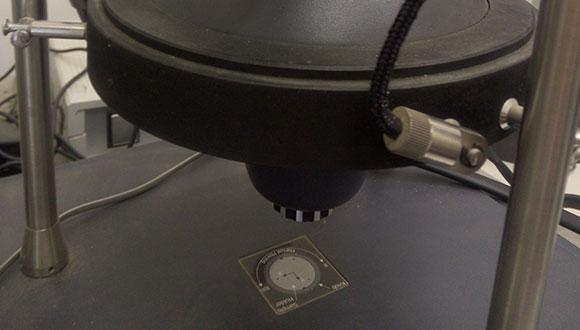Advanced Laboratory in Physical Chemistry - Experiment 1
Scanning Probe Microscopy (AFM)
Atomic force microscopy (AFM) is a type of scanning probe microscopy (SPM), a branch of microscopy that forms images of surfaces by employing different physical methods. In this experiment, you will learn about the general principles underlying the atomic force microscope, its different operation modes, and you will use it to analyze different samples.
Experiment schedule
-
Week 1 - You will be given reading material and a short introduction.
-
Week 2 - Oral exam according to the questions given below, and analysis of a Silicon sample.
-
Week 3 - Analysis of Tellurium nanowires.
-
Week 4 - Analysis of an unknown sample.
Working guidelines
-
Safety precautions must be followed.
-
Performing the different experiment will be only during the designated time.
-
Operating the different instruments will be allowed only after approval from the instructor.
-
Transferring laboratory equipment from different work-stations is not allowed.
Lab report
-
The exact measurement parameters must be recorded for reproducibility.
-
Each couple will hand one report. The grade is given individually.
-
The report will consist of the following :
-
Experiment title, names and IDs
-
A theoretical introduction including a description of the system.
-
Results and discussion, including tables and images:
Each experiment will be given a title, objective, any relevant theoretical introduction, a description of the system including raw data (it is preferred to set it in a table), general results and discussion including comparison between the different modes, and variations from the expected results, and finally conclusions.
-
-
References.
-
Pages and titles should be numbered.
Preparation
You will be asked about the following questions:
-
How is the cantilever deviation detected, and how can you measure the surface of the sample?
-
Describe the working procedures of both the AFM and STM for surface imaging.
-
What is the difference between the samples and tips used in AFM and STM measurements?
-
Name two advantages and two disadvantages of SPM measurements.
-
Describe the general shape of a force-distance curve. What are the different tip-sample interactions that one can measure?
-
Describe the differences between contact and tapping modes in AFM. How is tapping mode more advantageous?
-
Which mode will benefit from a short/strong cantilever?
-
Describe the role of Polyvinylpyrrolidine (PVP) in the synthesis of Tellurium nanowires.


